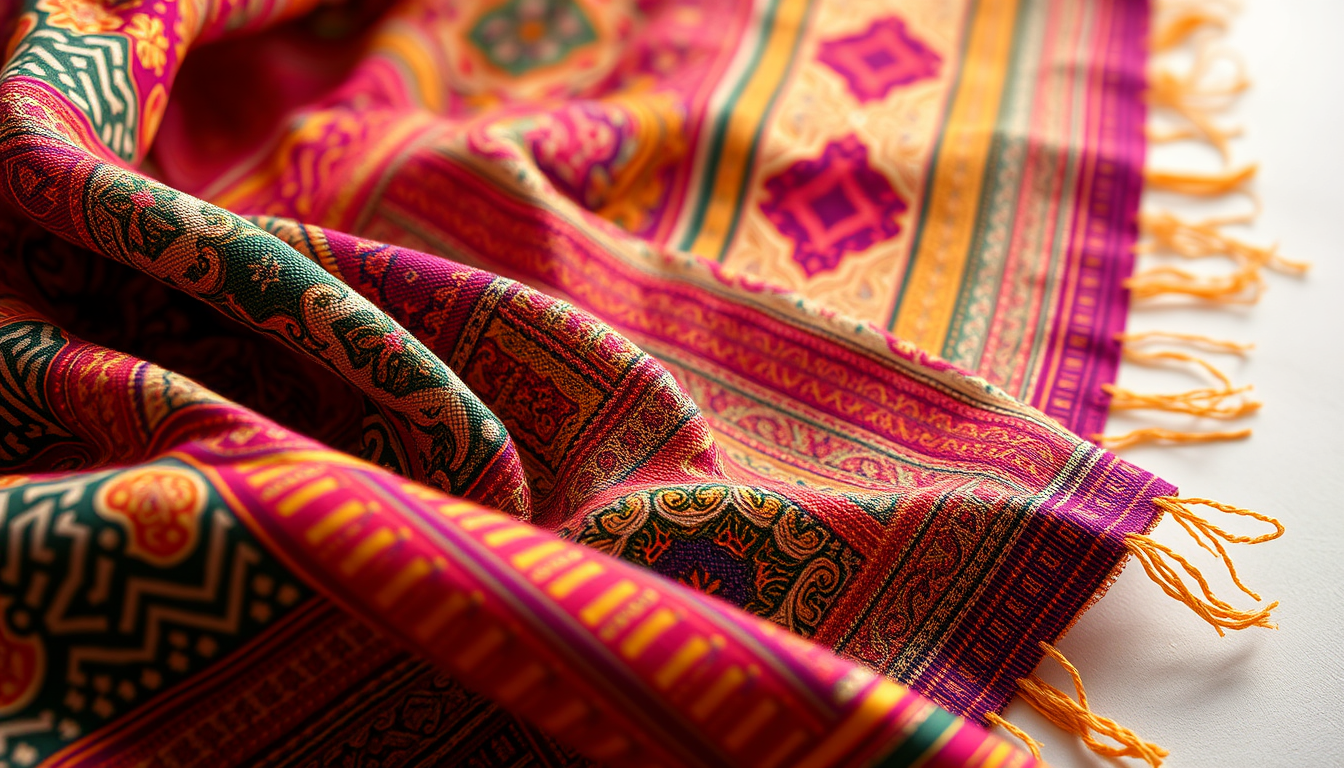Indian fabric, a term that encompasses a wide array of textiles, is renowned worldwide for its rich history, vibrant colors, and intricate designs. This article delves into the world of Indian fabric, exploring its origins, traditional techniques, popular types, and the modern-day significance of this art form.
The Origins of Indian Fabric
Ancient Textile Traditions
The history of Indian fabric dates back to the Indus Valley Civilization, one of the world’s earliest urban civilizations, which flourished around 3300 BCE. Archaeological findings, such as the Mohenjo-Daro and Harappa sites, have revealed evidence of textile production, including cotton and wool fabrics.
The Influence of Trade Routes
The Silk Road, a network of ancient trade routes connecting the East and West, played a significant role in the development of Indian fabric. Merchants brought new materials and techniques from distant lands, enriching the Indian textile industry. This exchange also facilitated the spread of Indian textiles to other parts of the world.
The Mughal Empire
The Mughal Empire (1526-1857) marked a golden age for Indian fabric. Under the rule of Mughal emperors, such as Akbar, Jahangir, and Shah Jahan, the textile industry flourished. The Mughals introduced new techniques, such as the use of gold and silver threads, and popularized intricate patterns like paisley and floral motifs.
Traditional Techniques of Indian Fabric
Handloom Weaving
Handloom weaving is a traditional technique that has been passed down through generations. It involves the use of a hand-operated loom to create intricate patterns and designs. This technique requires skill, patience, and a deep understanding of the art.
Block Printing
Block printing is another traditional technique that involves carving designs onto wooden blocks and using them to print patterns onto fabric. This method is often used to create vibrant, repeating patterns on textiles like cotton and silk.
Embroidery
Embroidery is a decorative needlework technique that involves stitching designs onto fabric. Indian embroidery is known for its intricate patterns and use of various stitches, such as chain stitch, satin stitch, and running stitch. Popular embroidery styles include Kantha, Phad, and Chikankari.
Dyeing Techniques
Indian fabric is renowned for its vibrant colors, which are achieved through various dyeing techniques. Natural dyes, such as those derived from plants, insects, and minerals, have been used for centuries. Techniques like resist dyeing, tie-dyeing, and batik are also common in Indian textile production.
Popular Types of Indian Fabric
Cotton
Cotton is one of the most popular fabrics in India, known for its breathability and comfort. It is often used to make clothing, bedding, and home decor items. Traditional cotton fabrics include Khadi, a hand-spun and hand-woven fabric, and Muslin, a lightweight, sheer fabric.
Silk
Silk is another popular fabric in India, known for its luxurious feel and sheen. It is often used to make saris, shawls, and other traditional garments. Popular silk varieties include Mulberry silk, Muga silk, and Tussar silk.
Wool
Wool is used to make a variety of garments, including shawls, sweaters, and blankets. Traditional wool fabrics include Pashmina, a soft, lightweight wool from the Himalayan region, and Kani shawls, which are hand-woven in Kashmir.
Linen
Linen is a lightweight, breathable fabric that is often used to make clothing, bedding, and home decor items. It is known for its durability and easy care.
Bamboo
Bamboo fabric is a sustainable and eco-friendly option that is gaining popularity in India. It is soft, breathable, and has natural antimicrobial properties.
The Modern-Day Significance of Indian Fabric
Cultural Preservation
Indian fabric plays a crucial role in preserving the country’s cultural heritage. Traditional techniques and designs are passed down through generations, ensuring that the rich history of Indian textiles is not forgotten.
Economic Impact
The Indian textile industry is a significant contributor to the country’s economy. It provides employment opportunities for millions of people, from farmers growing cotton and silk to artisans creating intricate designs.
Global Demand
Indian fabric is in high demand worldwide, with many fashion designers and brands incorporating traditional Indian designs into their collections. This global interest has led to an increase in exports and a rise in the industry’s profitability.
Sustainability
There is a growing awareness of the importance of sustainability in the textile industry. Many Indian artisans and manufacturers are adopting eco-friendly practices, such as using natural dyes and recycled materials, to reduce their environmental impact.
Conclusion
Indian fabric is a testament to the country’s rich history, vibrant culture, and skilled artisans. From ancient textile traditions to modern-day significance, the story of Indian fabric is one of resilience, innovation, and cultural preservation. As the world continues to appreciate the beauty and uniqueness of Indian textiles, the industry is poised for a bright future.
